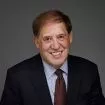It took a long time, but SECURE 2.0 finally became law at the end of last year. And it has the potential to affect workplace retirement savings in a big way. Here are some more thoughts about a few of the law changes Carol Buckmann mentioned in her late December post (SECURE 2.0 Is Finally Passed with Gifts for Everyone). In this article, we address how the new law can increase workplace retirement plan participation and savings rates. Plan sponsors and administrators should take note to keep up with this evolving area.
Mandatory Automatic Enrollment and Escalation Requirements for New 401(k) and 403(b) Plans. The new mandatory enrollment and automatic deferral requirements are potentially the most impactful changes for increasing workplace savings. Most new 401(k) and 403(b) plans – but not existing plans, church and government plans and plans for small businesses with 10 or fewer employees or plans for businesses less than 3 years old – will be required to enroll employees once they're eligible at a minimum deferral rate of 3% of compensation and automatically increase their deferral rate each year until it reaches at least 10 percent. Employees will still have the ability opt out or choose a different deferral rate. And if no investment choice has been made, the deferrals will automatically be invested in the plan's Qualified Default Investment Alternative, which will be a target date or balanced fund, or a managed account.
According to a 2021 Principal Financial Group poll of more than 2,000 workers and retirees and 230 plan sponsors, 84% of workers automatically enrolled in their workplace plan said they started to save for retirement at an earlier age than if the plan required them to enroll on their own, with 65% of employees saving at a higher savings rate and 47% of plan assets growing faster than before. And according to Vanguard Investments, since auto enrollment typically adds lower-paid employees to the plan on a relative basis, if an employer chooses to voluntarily match these contributions, the cost for providing the match could be somewhat diluted.
Given the long lead time employers will need to administer the new requirement and, of course Congress' need to limit the cost of the bill, it won't be effective until plan years beginning after December 31, 2024. But plans without auto enrollment and auto escalation provisions could also be left behind in the competitive race for employees without these enhancements and all plans choosing to add auto enrollment and auto escalation should start communicating with employees well in advance of the change.
Earlier Coverage for Part-Time Workers. SECURE 2.0 changes existing law enacted as part of 2019's original Secure Act to reduce the amount of service necessary before long-term part-time employees can make deferrals under their 401(k) plans (and extends this coverage requirement to 403(b) plans subject to ERISA). Effective for plan years beginning after December 31, 2024, employees can make deferrals after only two consecutive years of employment so long as they have with at least 500 hours of service each year. These contributions do not have to be matched and can be excluded from nondiscrimination testing. Most likely, these changes will cause plans to consider allowing part-timers to participate and defer as soon as full-time employees are eligible to avoid recordkeeping headaches. (In fact, pre-2021 service was disregarded for eligibility purposes under the original Secure Act and for vesting purposes under SECURE 2.0 in a nod to recordkeeping difficulties.)
Savers' Credit Converted to Contribution for Low- and Moderate-Income Employees. The current Savers' Credit for low- and moderate-income employees who make contributions to retirement plans will be converted to a federal matching contribution beginning in 2027. The federal matching contributions will be made as soon as employees make a claim for the match on their tax returns. The federal government will deposit the match equal to the lesser of 50% of the employee's contributions or $1000 to the applicable retirement account, subject to income limits phaseouts. (The match is also available for contributions made to individual retirement accounts such as traditional IRAs.)
Increasing the Credit for Small Employer Retirement Plan Start-up Costs. Effective for tax years beginning after December 31, 2022, SECURE 2.0 also increased the small business tax credit generally available to small employers starting retirement plans to encourage new plan formation. (A tax credit reduces the amount of taxes owed on a dollar-for-dollar basis.) Before the effective date of this provision, employers with fewer than 100 employees were eligible for a three-year credit up to 50% of their administrative costs for starting a plan (including the cost to educate employees about the plan), up to $5,000 per year. SECURE 2.0 increases the credit to up to 100% of qualified costs for employers with 50 employees or fewer and provides an additional credit for up to five years based on the amount contributed by the employer on behalf of employees. The credit is up to $1,000 per employee, phased out for employers with between 51 and 100 employees and isn't available for employees with wages greater than $100,000 per year (as indexed). To the extent small businesses pay their start up 401(k) plan fees from corporate assets, the tax credit lowers their out-of-pocket costs for up to three years.
Although most of SECURE 2.0's requirements won't become effective for plan years beginning before December 31, 2023, employers with existing plans will want to think about incorporating these provisions for competitive reasons – and to leave enough lead time for programming changes and participant communications. And if a small business intends to take advantage of the plan start up tax credit, cost modeling will also be needed. So, plan sponsors should start thinking about these changes as early as possible.
The content of this article is intended to provide a general guide to the subject matter. Specialist advice should be sought about your specific circumstances.
